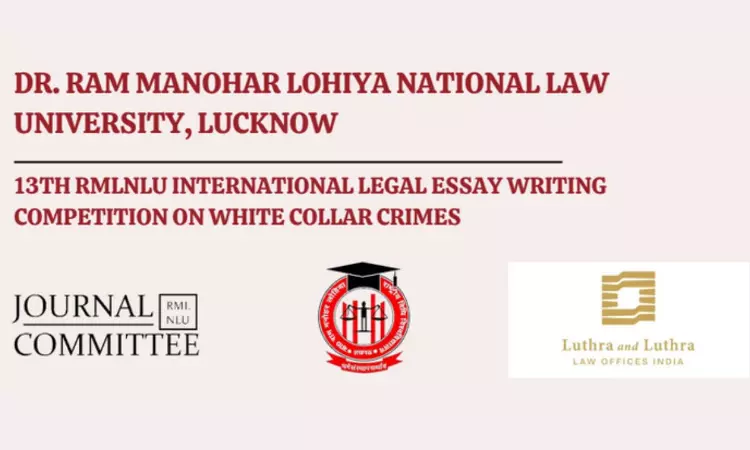Conjugal Rights under Hindu Marriage Act, 1955- Our Legal World
INTRODUCTION
Marriage is a sharing of common life, a sharing of all the happiness that life had to offer and all the misery that has to be faces in life. Marriage is a sacrament existing since ancient time and now even governed by law. However, the modern society has played an important role in today’s world. It is more often seen that marriages are going through a frequent break. Thus, with the continuous increase of break through the laws now provides several remedies. They help to provide relief to the aggrieved party and bring remedies as under different personal laws. One such remedy is provided, ‘Restitution of Conjugal Rights’ under Hindu Law. Hindu Marriage Act, 1955 came into existence only in order to provide relief to such problems.
RESTITUTION OF CONJUGAL RIGHTS
After marriage, it is the responsibility of every spouse to stay together. They are supposed to provide comfort to each other and not withdraw from each other’s society without any reasonable ground. If either of the spouses does not reside in the society of another without any reasonable cause then, the other party is called to the aggrieved party. The term ‘Restitution’ means “Restoring of anything unlawfully taken from another”.[1] It is considered to be a positive remedy as it aims for the parties to stay together. However, conjugal right is a wider term and is not possible to give exact definition. Further, ‘Conjugal Rights’ means “rights relating to marriage or the relationship between husband and wife”.
Ideology to Conjugal Rights
Conjugal rights connote two ideas-
(a) Those rights which husband and wife have to each other’s society and,
(b) Marital intercourse.
HISTORICAL BACKGROUND
The remedy of the restitution of conjugal rights is based upon the concept of good ancient days about marriage when the wife was considered as property. In Hindu law corrective measures were provided for wife’s faults but it was not peculiar to Hindu law only. Earlier, it was held that the decree should direct the delivery of the wife bodily into her husband’s hand.[2] Though this law was later settled stating the petitioner’s wife be returned to his protection.[3] This was due to Constitution that the wife was given equal status and opportunity. Whereas, earlier they used to be part of slavery but there arose several provisions that led to safety of women as well.[4]
This concept was however unknown to Hindus before the British introduced it in the name of Social Reforms. After Independence, Hindus found its place under Section 9 of Hindu Marriage Act, 1955. In India, this concept was first seen in the case of Moonshee Buzloor Ruheem v. Shumsoonissa Begum[5] in the year 1867, where such actions were regarded as considerations for specific performance.
OVERVIEW OF ADULTERY IN INDIA BY ANITA DEVI- Our Legal World
SECTION 9, HINDU MARRIAGE ACT, 1955
Section 9 of Hindu Marriage Act, 1955 defines Conjugal rights as,
“When either the husband or the wife has, without reasonable excuse, withdrawn from the society of the other, the aggrieved party may apply, by petition to the district court, for restitution of conjugal rights and the court, on being satisfied of the truth of the statements made in such petition and that there is no legal ground why the application should not be granted, may decree restitution of conjugal rights accordingly.”
The important elements of Section 9 are as follows-
1) Withdrawal from society
2) By either of the spouse
3) Without any reasonable ground
The decree of Restitution of Conjugal Rights is passed in case of a valid marriage and also possible in case of a voidable marriage as it is a valid marriage till a decree is passed against it but not in case of a void marriage.[6] Here, the term society means within companionship of each other. However, the withdrawal must be based on some unreasonable ground. If the grounds include cruelty, adultery, unsoundness of mind, demand of dowry or any such reason shall amount to be a reasonable ground for such withdrawal.
Other laws-
This right is provided not only under Hindu Law, but there are many other acts which provide such remedy-
(i) Section 32 of Divorce Act, for Christians
(ii) Section 36 of Parsi Marriage and Divorce Act, for Paris’s
(iii) Section 22 of the Special Marriage Act, for people marrying in Civil form
File a suit
The aggrieved party can file a suit against his/her spouse. However, it is important that elements to file a suit must be fulfilled and complete. The case can be filed to the Court that falls within the jurisdiction of the case. Importantly, the grounds must be based on truth and must be satisfying to the Court.
The slightest of behaviour of either party is enough to show the withdrawal from society of the other party.[7] Thus, the general rule lies behind “reasonable excuse” which must be satisfying to the court. If a wife refuses to live with the aged parents of the husband then this does not give the wife to put a reasonable ground.[8] Whereas, a husband putting a question to the chastity of her wife is insulting.[9] Therefore, it wholly depends upon the discretion of Court whether the decree must be passed or not.
Withdrawal from each other’s society
The act of withdrawal must necessarily be voluntary. However, it is not necessary that such a withdrawal be physical only. It counts both mental and physical withdrawal as it plays all about intention. A party even after staying under the same roof can result in withdrawing from other’s society.[10]
Merely living apart due to any particular reason, for the reason of job, monetary or financial reasons or any such reason shall not result in withdrawal.[11]
Burden of Proof
The burden of proof initially lies on the aggrieved party. He is bound to prove that the respondent has withdrawn from his or her society. Once the petitioner i.e. the aggrieved party fulfills to do so the burden of proof then passes to the respondent in order to give a reasonable excuse to the Court. Thus, the burden of proof operates in two levels. In Deepa Suyal v. Dinesh Chandra Suyal,[12] Court held that burden of proof lies on the party who withdraws from the marital obligations.
After passing decree
If the parties do not reside or cohabit together even after the decree is passed and such a situation occurs for continuous one year[13], then, it becomes the ground for divorce under Section 13(1A) (ii) of Hindu Marriage Act for non-compliance with decree. This means that the legislature has created Restitution of Conjugal Rights as an additional ground for divorce.[14]
CONSTITUTIONAL VALIDITY
With time, it was seen that some people questioned the constitutional validity of Section 9 of the Hindu Marriage Act. People stated that it is against law, as under this Act either party is forced to stay with another and this restrains the ‘Right to Freedom’. However, this was supported by the court in T. Sareetha Vengata Subbiah v. State[15]. The Court held that Section 9 is void and it is against Articles 14 and 21 of the Indian Constitution as it compels the wife to stay with her husband against her wish. Also, the consequences of the enforcement of such a decree are first to transfer the choice to have or not to have marital intercourse to the State from the concerned individual. Therefore, this provision is a violation of individual privacy and human dignity.
However, the Delhi High Court in Harvinder Kaur vs. Harmander Singh Choudhry[16] held that Section 9 cannot enforce sexual intercourse, but only cohabitation. Therefore, restitution of conjugal rights can’t be ordered where the respondent refuses sexual intercourse but continues to cohabit with the petitioner.
Furthermore, to solve the conflict between High Courts, the Supreme Court in Sudharshan Kumar v. Saroj Rani[17] held that Section 9 is not violative of any provision of the Indian Constitution. Thus, it was declared to be constitutional.
CONCLUSION
Restitution of Conjugal rights is a positive remedy in order to prevent the marriage from destruction. However, the concept is based upon good faith and intention. It is the responsibility of each party to cohabit with one another after the marriage. But if the either spouse fails to do so then the aggrieved party has relief under Hindu Law. Such relied is not only provided to Hindus, while there are several other laws under which different religions can find remedy for themselves. Therefore, to pass a decree of Restitution of Conjugal Rights it wholly depends upon the discretion of Court whether it is satisfied by the grounds followed or not.
REFERENCES
- [1] Strouds, Judicial Dictionary of Words and Pharases, 4th Ed Vol. 3, ‘(1973) p» 2373.
- [2] Hurka Shunkur v, Raeejee Monohiir, I.L.R. I Bom. 353
- [3] Koobitr Khansama v. Jan Khansama, 8 W.R. 467
- [4] Shakila Banu v. Gulam Mustafa
- [5] (1867) 11 MIA 551
- [6] Ranjan V. Kejriwal v. Vinod Kumar Kejriwal
- [7] Sushila Bai v. Suresh Narayan
- [8] R. Natarajan v. Sujhata Vasudevan, 2011
- [9] Smt. Sumanbai v. Anandrao Onkar Panpatil, 1976
- [10] Powell v. Powell
- [11] Alka Bhasker v. Satchidananda Barke, 1991
- [12] AIR 1993 All 244, I (1994) DMC 5
- [13] Karabi Das v. Paritosh Das, 2003
- [14] Harvinder Kaur v. Harminder Kaur, 1984
- [15] AIR 1983 AP 356
- [16] AIR 1984 Delhi 66
- [17] 1984 AIR 1562
- https://www.ijlmh.com/wp-content/uploads/2019/04/Restitution-of-Conjugal-RightsIs-it-still-relevant.pdf
- Paras Diwan, Marriage and Divorce, 3rd ed.








